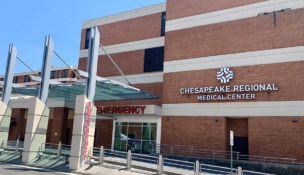Economic growth to continue slowing, ODU experts say
Mid-year forecast predicts increased risk of recession
Economic growth to continue slowing, ODU experts say
Mid-year forecast predicts increased risk of recession
The U.S. economy will continue to slow in the second half of 2022 and a recession is increasingly likely, according to the Old Dominion University‘s Dragas Center for Economy Analysis and Policy’s mid-year economic forecast released Friday.
Increases in inflation are expected to slow as well but harden, leaving costs elevated, report Robert McNab and Vinod Agarwal, director and deputy director of the Dragas Center. They forecast that U.S. real gross domestic product (GDP) will increase at an annual rate of 2.2% this year and that Virginia’s real GDP will increase at an annual rate of 2.4%. Hampton Roads‘ real GDP is expected to increase by 2.4% primarily because of anticipated increases in defense spending.
Reductions in government spending, the effects of COVID-19 on supply chains and Russia’s invasion of Ukraine contributed to the 1.5% shrink in real GDP in the first quarter of 2022.
“While we are confident in the ability of the Federal Reserve to adjust its monetary policy in the short term, we are significantly more concerned about the ability of Congress and the administration to seriously tackle the deficit and debt,” says a news release from the Dragas Center.
Despite the slowing of inflation, the economists predict it will be difficult for the Fed to raise the discount rate sufficiently to lower inflation without significantly slowing economic and job growth in the coming months. Also, the report predicts the Consumer Price Index to increase by 6.5% in 2022, and core CPI will increase by 5.5%. Those numbers are expected to continue to increase in 2023 but not as quickly, with the Dragas report expecting a 4.8% rise in CPI next year and core CPI growing by 4.4%.
Mind over matter
In April 2022, inflationary expectations — beliefs among consumers when asked about future costs in a University of Michigan study — reached 5.4%, the highest level since the Great Recession of 2008.
“The danger is that increasing inflationary expectations will become a self-fulfilling prophecy, forcing the Federal Reserve to act even more aggressively and tipping the economy into a recession in the later quarters of 2022,” the Dragas Center reported.
Slowing economic growth will lead to slower growth in individual employment and jobs in the second half of the year, according to the forecast.
The U.S. headline unemployment rate (the rate of unemployment that is based on the number of people who officially say they do not have a job and are looking for work) is expected to average 3.8% in 2022 and increase to 4.1% in 2023, according to the Dragas Center.
In Virginia, which usually has lower unemployment numbers than the national average, the headline unemployment rate will average 3.5% this year and increase to 3.8% in 2023. The Hampton Roads headline unemployment rate is predicted to average 3.3% this year, and the number of civilian jobs are likely to grow by 2.2%. Job quits will remain high through this year but should slow in 2023 as economic growth slows and the risk of recession grows.
As for the Port of Virginia, the Dragas Center forecasts that general cargo tonnage will increase by 8.7% this year, and 20-foot equivalent units (TEUs) by 11.8%. The port handled a record amount of TEUs in 2021, so the prediction lines the port up to set another record this year.
The median price of existing residential homes sold in Hampton Roads is expected to continue climbing this year but at a lower rate than seen in 2020 or 2021, the Dragas Center predicts, as rising interest rates dampen demand.
n















